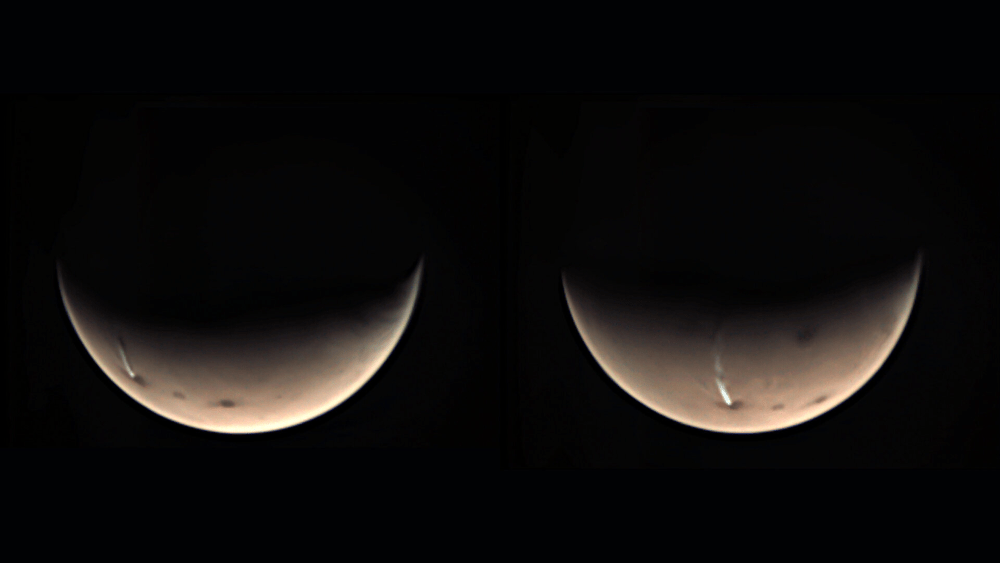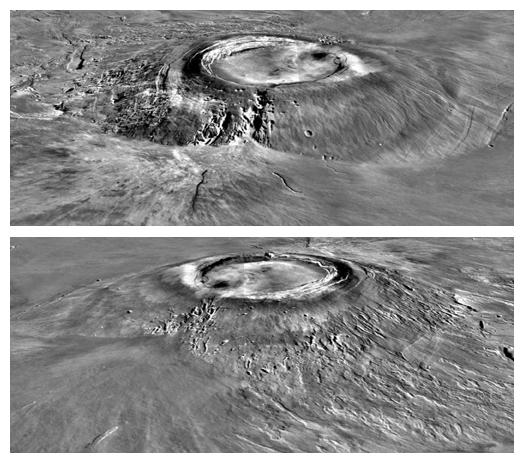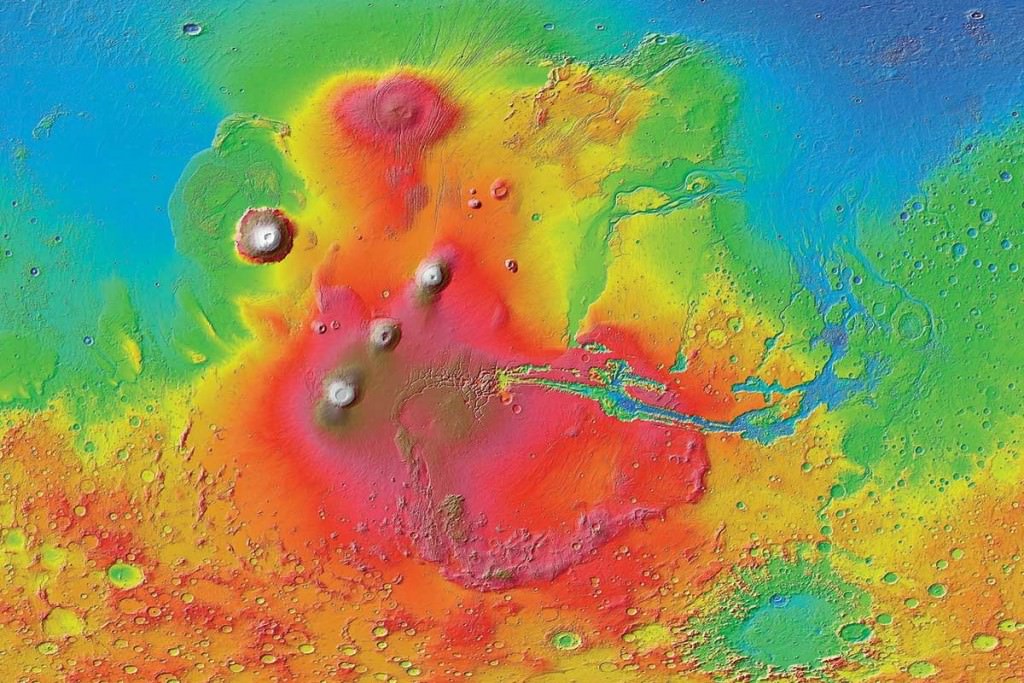Mars’ massive cloud is back.
Every year during Mars’ summer solstice, a cloud of water ice forms on the leeward side of Arsia Mons, one of Mars’ largest extinct volcanoes. The cloud can grow to be up to 1800 km (1120 miles) long. It forms each morning, then disappears the same day, only to reappear the next morning. Researchers have named it the Arsia Mons Elongated Cloud (AMEC).
The massive extinct volcano that is home to the cloud is Arsia Mons, a 20 km high (12.4 miles) landmark on Mars’ surface. Mars is too cold for liquid water, so the cloud is made of water ice. Though it looks like it could be a plume from the volcano, it’s not. All of Mars’ volcanic activity ceased a long time ago.
The cloud is seasonal, and observers were expecting it around this time of year.
“We have been investigating this intriguing phenomenon and were expecting to see such a cloud form around now,” explains Jorge Hernandez-Bernal, PhD candidate at the University of the Basque Country (Spain) and lead author of the ongoing study.
“This elongated cloud forms every Martian year during this season around the southern solstice, and repeats for 80 days or even more, following a rapid daily cycle. However, we don’t know yet if the clouds are always quite this impressive,” added Bernal in a press release.

The southern solstice is when the Sun is in its southernmost position in the sky. Since a Martian year is about twice as long as an Earth year—687 days compared to 365—the seasons last about twice as long. This cloud grows each morning during the season, for about three hours. Then, it disappears.
“The extent of this huge cloud can’t be seen if your camera only has a narrow field of view, or if you’re only observing in the afternoon,” says Eleni Ravanis, a Young Graduate Trainee for the Mars Express mission who works specifically for the VMC instrument.
The ESA’s Mars Express spacecraft spotted the cloud with its Visual Monitoring Camera (VMC.) While other cameras on orbiters try to zoom in and get as much detail as possible, VMC is different. It’s been described as a web cam in space, and its wide angle helps it see things like the cloud.
“Luckily for Mars Express, the highly elliptical orbit of the spacecraft, coupled with the wide field of view of the VMC instrument, lets us take pictures covering a wide area of the planet in the early morning,” said Ravanis. “That means we can catch it!”

The spacecraft is on a wide elliptical orbit, which takes it as far as 10,107 km (6,280 mi) away from the planet. From that distance, it can image the entire planet, and can capture large-scale features like this cloud.
The Martian atmosphere is dominated by carbon dioxide, which makes up over 95% of the atmosphere. Water vapour is only a trace gas, and has high variability seasonally, daily, and spatially. Researchers hope that watching this cloud will help fill in the picture of Mars’ atmosphere, including how carbon dioxide behaves.
The cloud is an orographic cloud, meaning that its formation is shaped by geography. They’re common on Earth, where mountain ranges force approaching air to rise. When the air cools, the water vapour condenses and becomes visible.
Arsia Mons is one of the three extinct volcanoes that make up the Tharsis Montes region on Mars, along with Pavonis Mons and Ascraeus Mons. Arsia Mons is the southernmost of the three. To the northwest of those three lies Olympus Mons, the tallest mountain in the Solar System.

The massive Olympus Mons also plays host to clouds of water ice. Those clouds don’t form an elongated stream like AMEC does, but they’re still orographic. They form due to Olympus Mons’ altitude, which is greater than 21 km (13 miles.)

With a human mission to Mars somewhere on the horizon, the planet is being scrutinized more than ever before. Currently, there are six orbiters operating at the planet, and two surface missions. A third surface mission, NASA’s Perseverance Rover, is en route to the red planet.
More:
- Press Release: Return of the extremely elongated cloud on Mars
- Wikipedia: Arsia Mons
- Universe Today: Amazing View of How Dust Storms Grow on Mars
